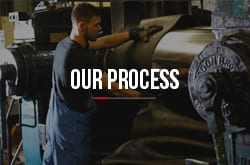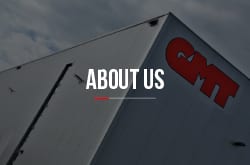There are numerous reasons why controlling vibrations in construction work is important, including the need to keep the construction plans continuing without complaint from the public.
Category:
The Importance of Controlling Vibrations in Construction
May 20th, 2023 by Steve MelvilleMachine Vibration Causes and Fixes
April 6th, 2023 by Steve MelvilleWhat Is Machine Vibration?
Most machinery experiences a level of vibration, and will have an expected ‘normal’ range of machine vibration while functioning. However, over time, or if something breaks or goes wrong, this level of vibration may be elevated beyond what is expected, and this can easily become dangerous to operators and the machine itself.
How to Reduce Noise and Vibrations from Wind Farms
February 16th, 2023 by Steve MelvilleIn the modern age, with our ever-increasing environmental awareness, it’s no wonder that different types of renewable energy and power generation are thriving. In the UK, one of the most popular forms of renewable energy is wind farms, both on- and off-shore, but the vibrations and noise from wind farms can be prohibitive in their building.
Ground Source or Air Source Heat Pumps – Which Is Better?
December 8th, 2022 by Steve MelvilleAir source heat pumps vs ground source heat pumps; the debate continues between these two similar but distinct technologies. Between May and July 2022, almost 903 ground and air source heat pumps were used to displace other types of home heating fuel including gas, oil and coal.
5 Signs You Need to Replace Worn Engine Mounts
June 2nd, 2021 by Steve MelvilleAn engine mount’s primary purpose is to secure an engine into machinery and absorb any shocks and vibrations when the machinery is operating. Engine mounts and anti-vibration mounts are essential for preventing damage to the engine and improving operator comfort (where applicable). But what happens when engine mounts need replacing? And, do you know the symptoms of worn engine mounts? We answer both of these questions in this post.
A Guide on the Different Types of Motor Mounts
April 16th, 2021 by Steve MelvilleEngine mounts are an essential component of your machine or vehicle, connecting the engine to the chassis. They are designed to absorb shocks, vibration and noise during operation, which is crucial for preventing damage to both the motor and the chassis. This post discusses the different types of engine mounts available, their pros and cons, and compares solid rubber vs hydraulic motor mounts.
Step by Step Guide to Choosing Anti-Vibration Mounts
April 8th, 2021 by Steve MelvilleAs a leading specialist in rubber vibration mounts, we offer our extensive expertise using a step by step guide to help you choose the correct rubber mounts. Read on to read our easy to follow guide to choosing the best anti-vibration mount to suit you.
The Advantages of Using Rubber Bushes
November 3rd, 2020 by Steve MelvilleRubber bushings are effective in reducing the transmission of shock and vibration between parts. In the automotive industry, there are many advantages of using rubber on shock absorbers, including improved safety and comfort when driving, minimised noise and damage due to reduced vibration.
The use of automotive rubber bushes has been credited to Walter Chrysler, an American automotive industry executive. Walter encouraged the adoption of rubber vibration-isolating mounts to cut down the vibration and noise of vehicles. From then on, automotive rubber bushes were adopted for use in many parts that generate vibration and noise, and are now a conventional method across the automotive and commercial vehicle industries.
An Introduction to Anti-vibration and Vibration Control Electric Car Components
March 12th, 2020 by Steve MelvilleOriginally, in July 2017 the government announced a ban on the sale of any new diesel, petrol or hybrid cars by 2040, in an effort to dramatically reduce air pollution. This comes as a strand of a larger plan to attempt to emit zero carbon by 2050. As such, as of February 2020, the banning of petrol and diesel cars by 2040 was brought forward to 2035 “if possible“.
How to Meet Industry Standard Isolation Levels by Choosing the Correct Vibration Control Products
January 22nd, 2020 by Steve MelvilleGMT mounts are used to isolate against two main types of mechanical movement; vibration and shock. Put simply; vibration is described as a repeated movement, whereas shock is a one-off disturbance.
Levelling Feet: A Comprehensive Guide
September 5th, 2017 by Steve MelvilleLevelling feet can stabilise a wide range of machinery, with the height adjustment feature of allowing machinery to be levelled when installed on uneven ground.
There are a variety of combinations and sizes available, meaning that there is a type to suit all applications. At GMT, spindles can be combined with various types of threaded foot plate, enabling customers to specify feet to their exact requirements. The feet can also be specified to have anti-slip rubber pads. Additionally, feet with high load bearing capacity and self-aligning capabilities are available.





